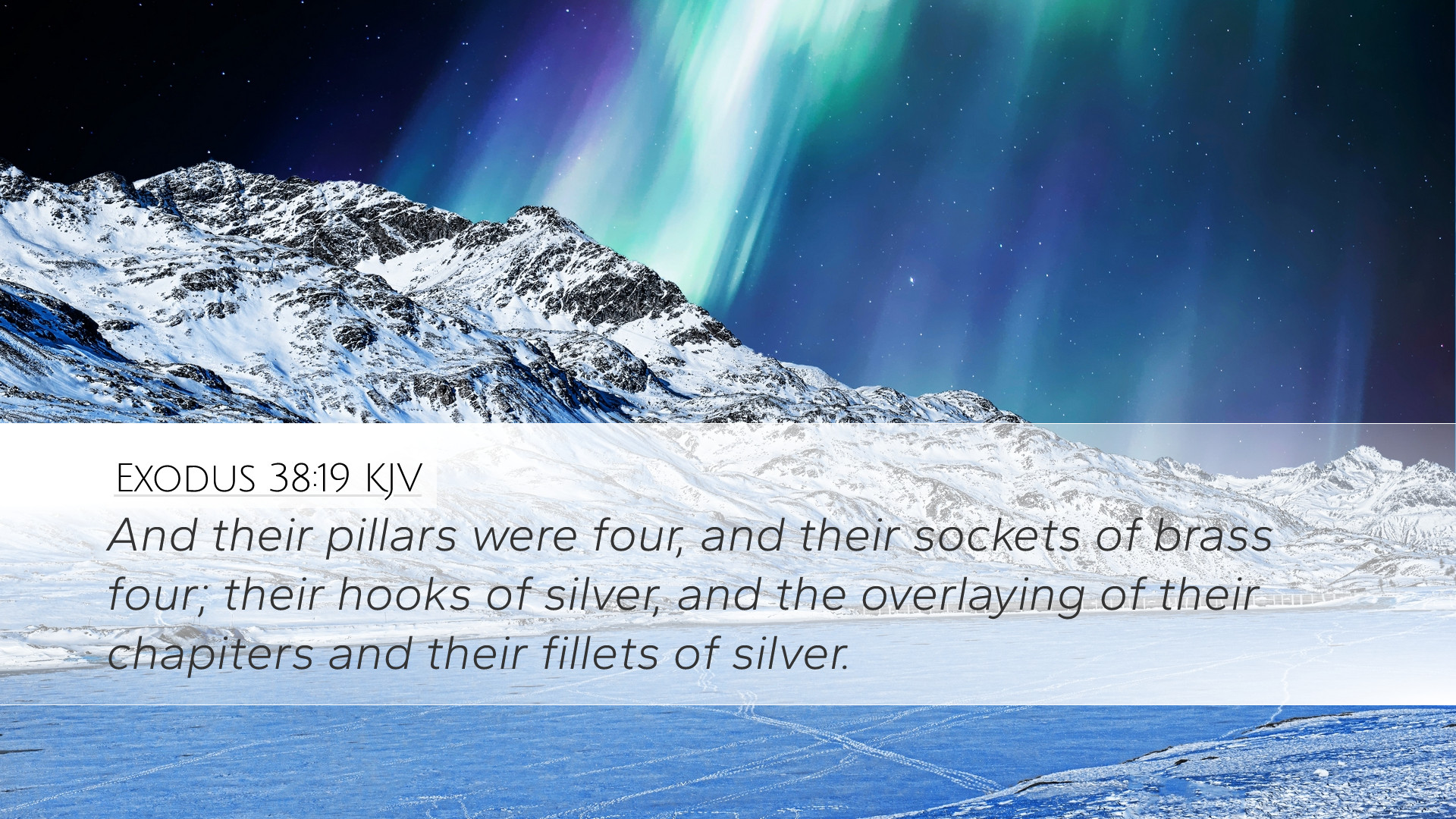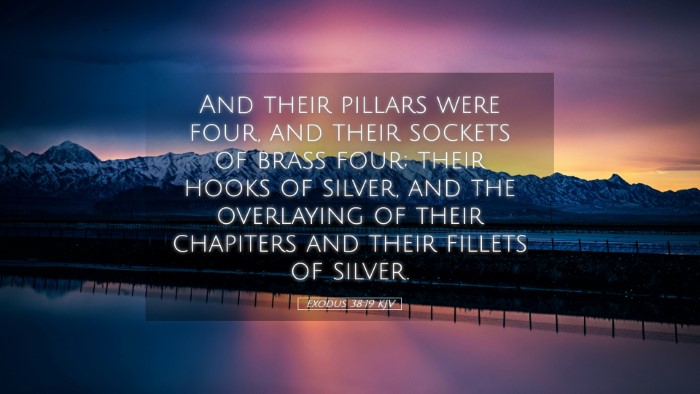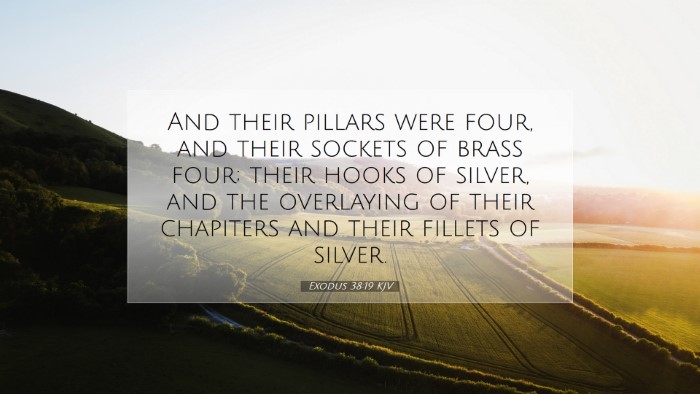Commentary on Exodus 38:19
Exodus 38:19 states, "The hangings of the court were of fine twined linen, and the pillars were of brass; their hooks were of silver, and the overlaying of their chapiters and their fillets of silver; and all the pillars of the court were filleted with silver." This verse provides significant insights into the Tabernacle's construction and its spiritual implications. A detailed examination through the lens of various prominent public domain commentaries offers a rich theological understanding of its meaning.
Overview of the Verse
In this verse, we focus on the detailed description of the hangings of the outer court surrounding the Tabernacle. This outer court is significant in that it marks a boundary between the holy place and the general public. The materials used - fine twined linen, brass, and silver - symbolize various spiritual truths and will be examined in-depth.
Insights from Matthew Henry
Matthew Henry emphasizes the importance of the materials chosen for the construction of the Tabernacle, particularly the hangings of fine twined linen. He notes that linen is a symbol of purity and righteousness, which is vital when considering the holiness of God. The hangings serve not just a functional purpose but also reflect the divine character. The fine twined linen is an indication of grace and divine beauty, setting the atmosphere of worship and reverence.
Henry also points out that the brass pillars symbolize strength and stability. In biblical typology, brass is often associated with judgment, in contrast to gold which signifies divinity. The combination of brass and silver in the structure represents God's judgment and grace, showing that while judgment is necessary, it is enveloped in grace and mercy. The use of silver hooks, he explains, may symbolize redemption and the price paid for our sins. This combination of materials reminds worshippers of the sacred balance between God’s justice and mercy.
Insights from Albert Barnes
Albert Barnes provides a meticulous examination of the elements described in this verse. He describes the fine twined linen as emblematic of the purity and holiness attributed to the God who dwells in the Tabernacle. The linen’s craftsmanship speaks to the care and detail God desires in worship. The elaboration of the court signifies a separation from the common and worldly - a space dedicated to God's worship.
Barnes elaborates on the significance of the brass pillars, highlighting their reflective nature of human frailty and moral weakness. The weight and strength of brass serve as a reminder of mankind's need for support and assistance from God. Regarding the silver, which is used as hooks, he notes that it signifies atonement. Silver, being a precious metal, represents the value of redemption in God's economy, alluding to the sacrificial nature of worship which ultimately leads to the redemption found in Christ.
Insights from Adam Clarke
Adam Clarke’s commentary delves into the materials listed, particularly drawing out the practical and spiritual implications of their usage. He observes that the description of the hangings as fine twined linen not only reflects elegance but also serves as a tangible representation of God’s divine presence. The linen's ultimate purpose is to create an environment conducive to worship and communion with the divine.
Additionally, Clarke addresses the brass pillars, noting that they stand firm and unyielding, signifying that God's judgment is foundational. The interaction of the various metals – brass, silver, and the linen – provides a doctrinal framework for understanding God’s nature. His conclusion links these elements back to the New Testament, illustrating how the Tabernacle foreshadows Christ, who fulfills the law and provides access to the Holy through His sacrifice.
Theological Implications
These commentaries collectively underscore significant theological implications. The intricate details found in Exodus 38:19 reflect God's attention to detail in the covenant relationship with His people. The materials not only serve practical purposes for the Tabernacle's function but also stand as symbols of God’s attributes - holiness, righteousness, mercy, and judgment. Each element provides insights into the nature of God and the appropriate attitude of worshippers.
Conclusion
In summary, Exodus 38:19 encapsulates essential truths about the character of God as evidenced through the construction of the Tabernacle. The comments by Henry, Barnes, and Clarke invite pastors, students, and theologians to appreciate the depths of God’s revelation through the sacred architecture of worship. As we study these elements, may we be reminded of the significance of approaching God with reverence, understanding the profound meanings behind the materials and design that invite us into His presence.


